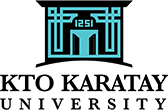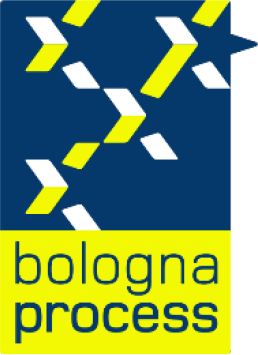Medical Imaging Techniques
Course Details

KTO KARATAY UNIVERSITY
Vocational School of Medical Services
Programme of Medical Imaging Techniques
Course Details
Vocational School of Medical Services
Programme of Medical Imaging Techniques
Course Details

| Course Code | Course Name | Year | Period | Semester | T+A+L | Credit | ECTS |
|---|---|---|---|---|---|---|---|
| 02910003 | Medical Imaging I | 1 | Autumn | 1 | 4+0+4 | 10 | 10 |
| Course Type | Compulsory |
| Course Cycle | Associate (Short Cycle) (TQF-HE: Level 5 / QF-EHEA: Short Cycle / EQF-LLL: Level 5) |
| Course Language | Turkish |
| Methods and Techniques | Anlatım, Soru-cevap, Tartışma, Gösterip yapma yöntemi. |
| Mode of Delivery | Face to Face |
| Prerequisites | - |
| Coordinator | - |
| Instructor(s) | Lect. Ayşe ÇÖMÜ |
| Instructor Assistant(s) | - |
Course Instructor(s)
| Name and Surname | Room | E-Mail Address | Internal | Meeting Hours |
|---|---|---|---|---|
| Lect. Ayşe ÇÖMÜ | B-131 | [email protected] | 7724 | Tuesday 10.00-12.00 |
Course Content
Röntgen cihazlarının tanıtılması, X ışını tüpü, X ışını tüpünün parçaları, X ışını tüpünün özellikleri, Kontrol cihazı, Radyografik İnceleme İçin Hazırlıklar 1, Radyografik İnceleme İçin Hazırlıklar 2, Kafa Radyografileri, Yüz Radyografileri, Gövde Radyografileri, Üst Ekstremite Radyografileri, Alt Ekstremite Radyografileri, Akciğer, Kalp Radyografileri. Karanlık oda tanımı, karanlık oda planlaması. Karanlık odada bulunan cihazlar. Kaset çeşitleri ve bakımları, film çeşitleri. Banyo kimyası. Unexpose röntgen filmlerinin depolanması ve korunması, exprese filmlerinin arşivlenmesi, korunması, otomatik banyo cihazları
Objectives of the Course
With this course students will be in Radiology unit; It is aimed to acquire the qualifications related to radiography by preparing the x-ray device, computerized x-ray device, digital x-ray device, portable x-ray devices for radiographic examination in line with national and international standards.
Contribution of the Course to Field Teaching
| Basic Vocational Courses | X |
| Specialization / Field Courses | |
| Support Courses | |
| Transferable Skills Courses | X |
| Humanities, Communication and Management Skills Courses |
Relationships between Course Learning Outcomes and Program Outcomes
| Relationship Levels | ||||
| Lowest | Low | Medium | High | Highest |
| 1 | 2 | 3 | 4 | 5 |
| # | Program Learning Outcomes | Level |
|---|---|---|
| P1 | Has the knowledge to evaluate and apply shooting positions related to the field of medical imaging techniques, technical infrastructure and physics principles of imaging devices, radiation safety and radiation protection rules, pharmacological structures of contrast agents, side effects and risk factors, and uses applied knowledge. | 5 |
Course Learning Outcomes
| Upon the successful completion of this course, students will be able to: | |||
|---|---|---|---|
| No | Learning Outcomes | Outcome Relationship | Measurement Method ** |
| O1 | Ability to express the necessary theoretical knowledge in imaging processes in the field of medical imaging techniques. | P.1.1 | 1 |
| O2 | Ability to understand the application requirements of imaging processes in the field of medical imaging techniques by associating them with theoretical foundations. | P.1.2 | 1,7 |
| O3 | Ability to apply theoretical knowledge of imaging processes in the field of medical imaging techniques on the patient. | P.1.3 | 7 |
| ** Written Exam: 1, Oral Exam: 2, Homework: 3, Lab./Exam: 4, Seminar/Presentation: 5, Term Paper: 6, Application: 7 | |||
Weekly Detailed Course Contents
| Week | Topics |
|---|---|
| 1 | Introduction to Medical Imaging I, Anatomical planes and positions, Head-Face X-Ray Examinations |
| 2 | Radiology Physics, Basic Concepts, Head-Face X-Ray Examinations |
| 3 | Devices and Principles of Operation, X-ray tube, Parts of X-ray tube, Head-Face X-Ray Examinations |
| 4 | Quantity and Quality of X-Ray, Radiation Protection Methods, Head-Face X-Ray Examinations |
| 5 | Effects of X-Ray, X-Ray Examinations of the Spine |
| 6 | Mammography Device and Shooting Techniques, X-ray examinations of the spine |
| 7 | Preparations for Radiographic Examination-Midterm exam |
| 8 | Mammography Device and Shooting Techniques, X-ray examinations of the spine |
| 9 | X-Ray Defects, Upper Extremity X-Ray Examinations |
| 10 | Appropriate Extraction Parameters, Upper Extremity X-Ray Examinations |
| 11 | Dental Radiographs, Upper Extremity X-Ray Examinations |
| 12 | CT Device, Lower Extremity X-Ray Examinations |
| 13 | MRI Device, Body X-Ray Examinations |
| 14 | General Review of X-Ray Examinations |
Textbook or Material
| Resources | Tekin, H. O. 2018. X-ray imaging techniques: all methods - basic principles advanced applications. Antalya: Congress Bookstore. |
Evaluation Method and Passing Criteria
| In-Term Studies | Quantity | Percentage |
|---|---|---|
| Attendance | - | - |
| Laboratory | - | - |
| Practice | - | - |
| Field Study | - | - |
| Course Specific Internship (If Any) | - | - |
| Homework | - | - |
| Presentation | - | - |
| Projects | - | - |
| Seminar | - | - |
| Quiz | - | - |
| Listening | - | - |
| Midterms | 1 | 40 (%) |
| Final Exam | 1 | 60 (%) |
| Total | 100 (%) | |
ECTS / Working Load Table
| Quantity | Duration | Total Work Load | |
|---|---|---|---|
| Course Week Number and Time | 14 | 4 | 56 |
| Out-of-Class Study Time (Pre-study, Library, Reinforcement) | 14 | 5 | 70 |
| Midterms | 2 | 36 | 72 |
| Quiz | 0 | 0 | 0 |
| Homework | 0 | 0 | 0 |
| Practice | 0 | 0 | 0 |
| Laboratory | 14 | 4 | 56 |
| Project | 0 | 0 | 0 |
| Workshop | 0 | 0 | 0 |
| Presentation/Seminar Preparation | 0 | 0 | 0 |
| Fieldwork | 0 | 0 | 0 |
| Final Exam | 1 | 46 | 46 |
| Other | 0 | 0 | 0 |
| Total Work Load: | 300 | ||
| Total Work Load / 30 | 10 | ||
| Course ECTS Credits: | 10 | ||
Course - Learning Outcomes Matrix
| Relationship Levels | ||||
| Lowest | Low | Medium | High | Highest |
| 1 | 2 | 3 | 4 | 5 |
| # | Learning Outcomes | P1 |
|---|---|---|
| O1 | Ability to express the necessary theoretical knowledge in imaging processes in the field of medical imaging techniques. | 5 |
| O2 | Ability to understand the application requirements of imaging processes in the field of medical imaging techniques by associating them with theoretical foundations. | 5 |
| O3 | Ability to apply theoretical knowledge of imaging processes in the field of medical imaging techniques on the patient. | 5 |
